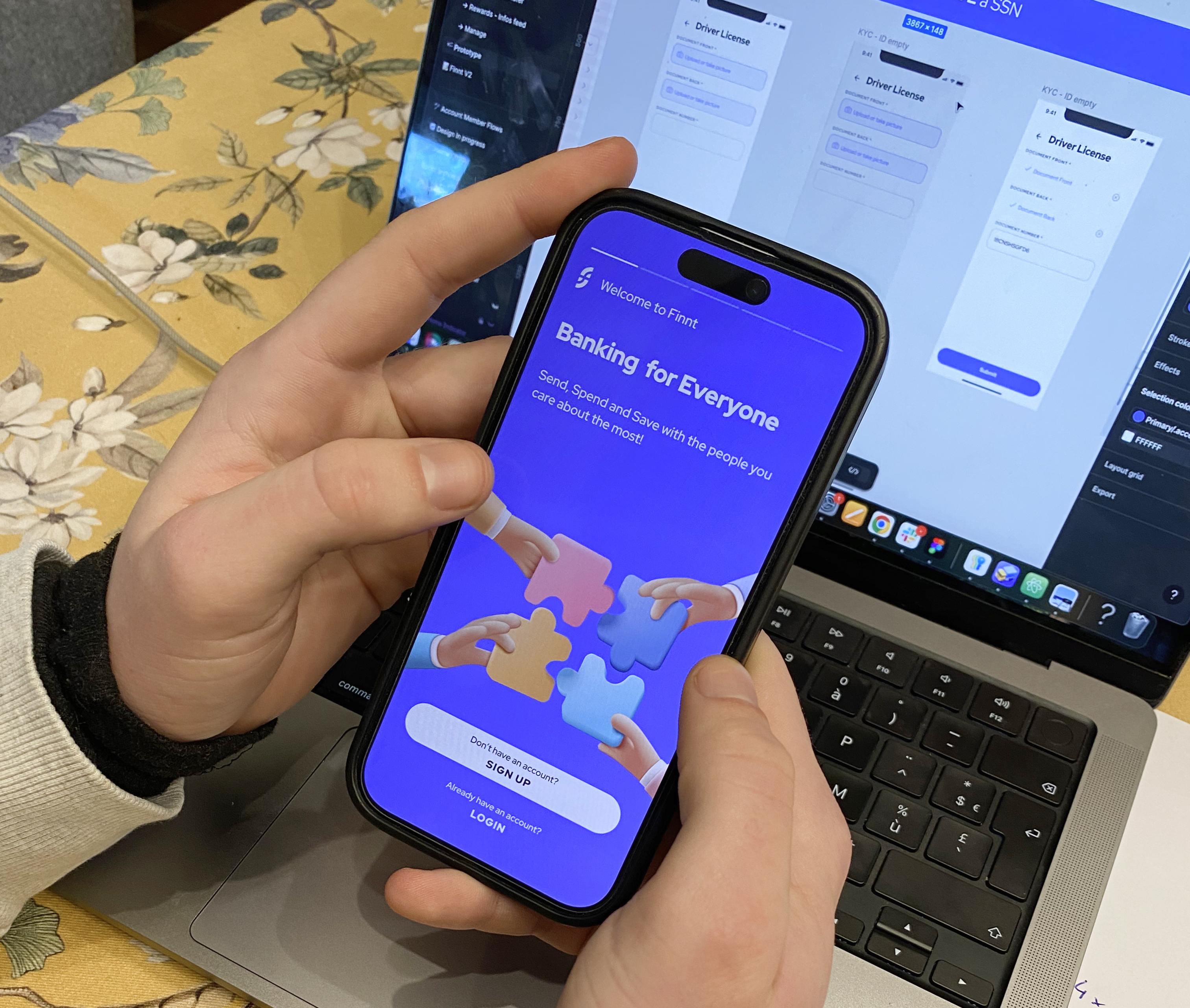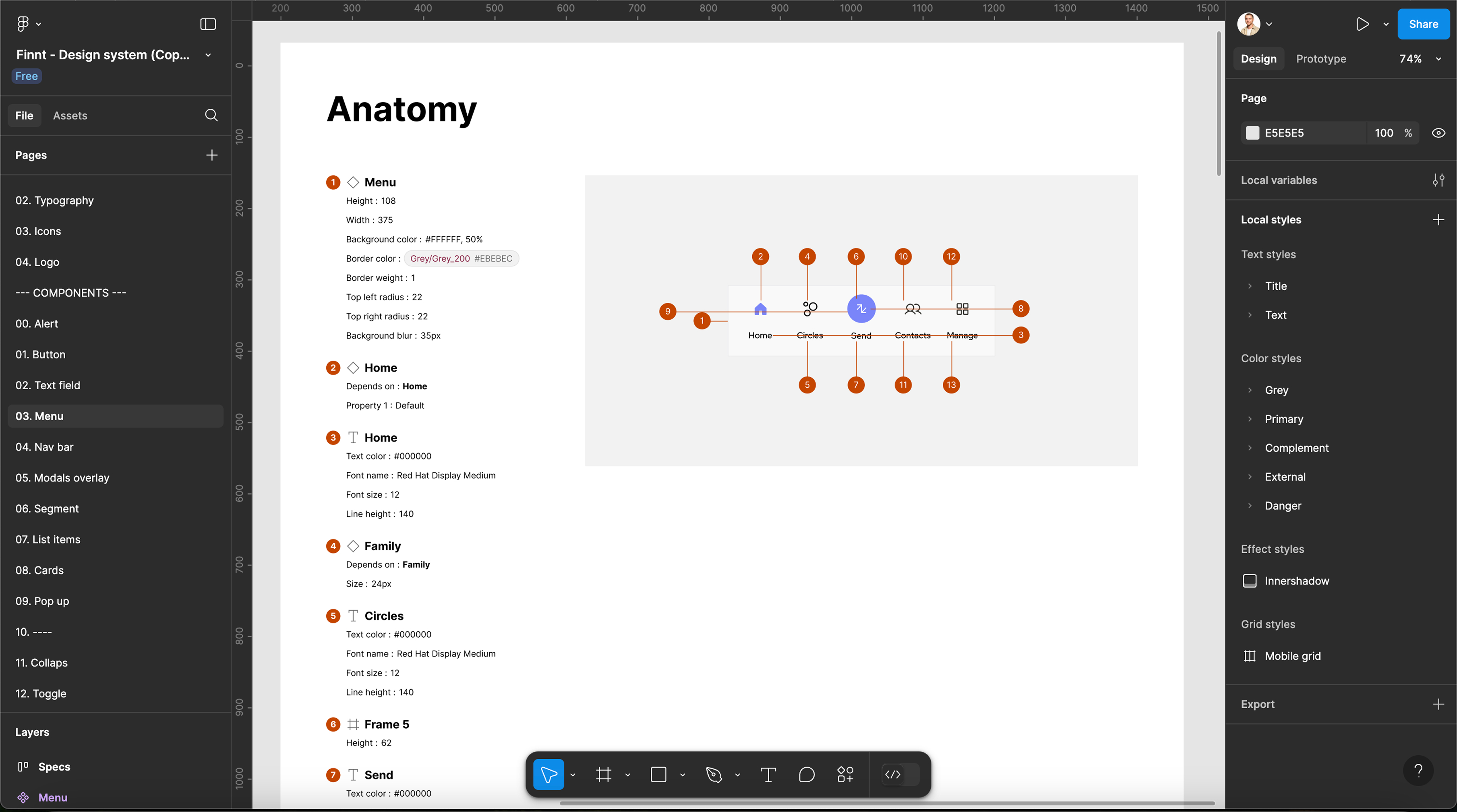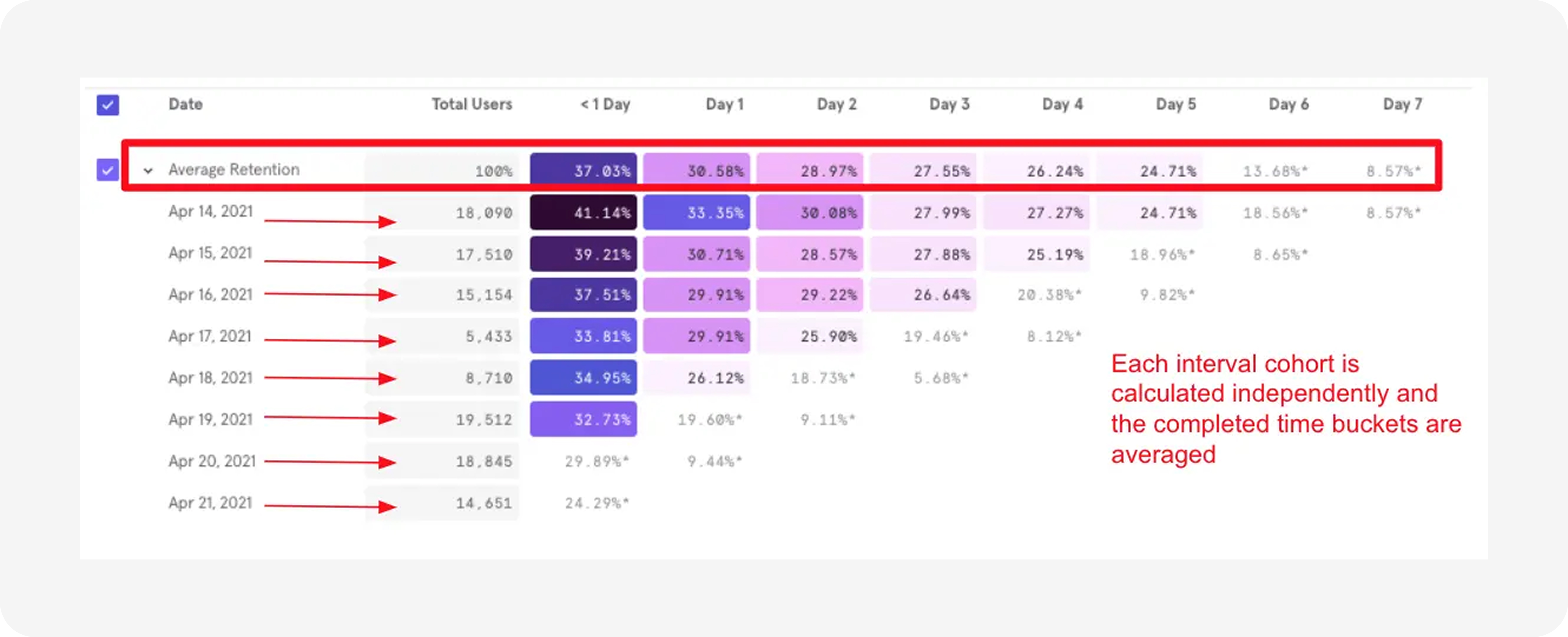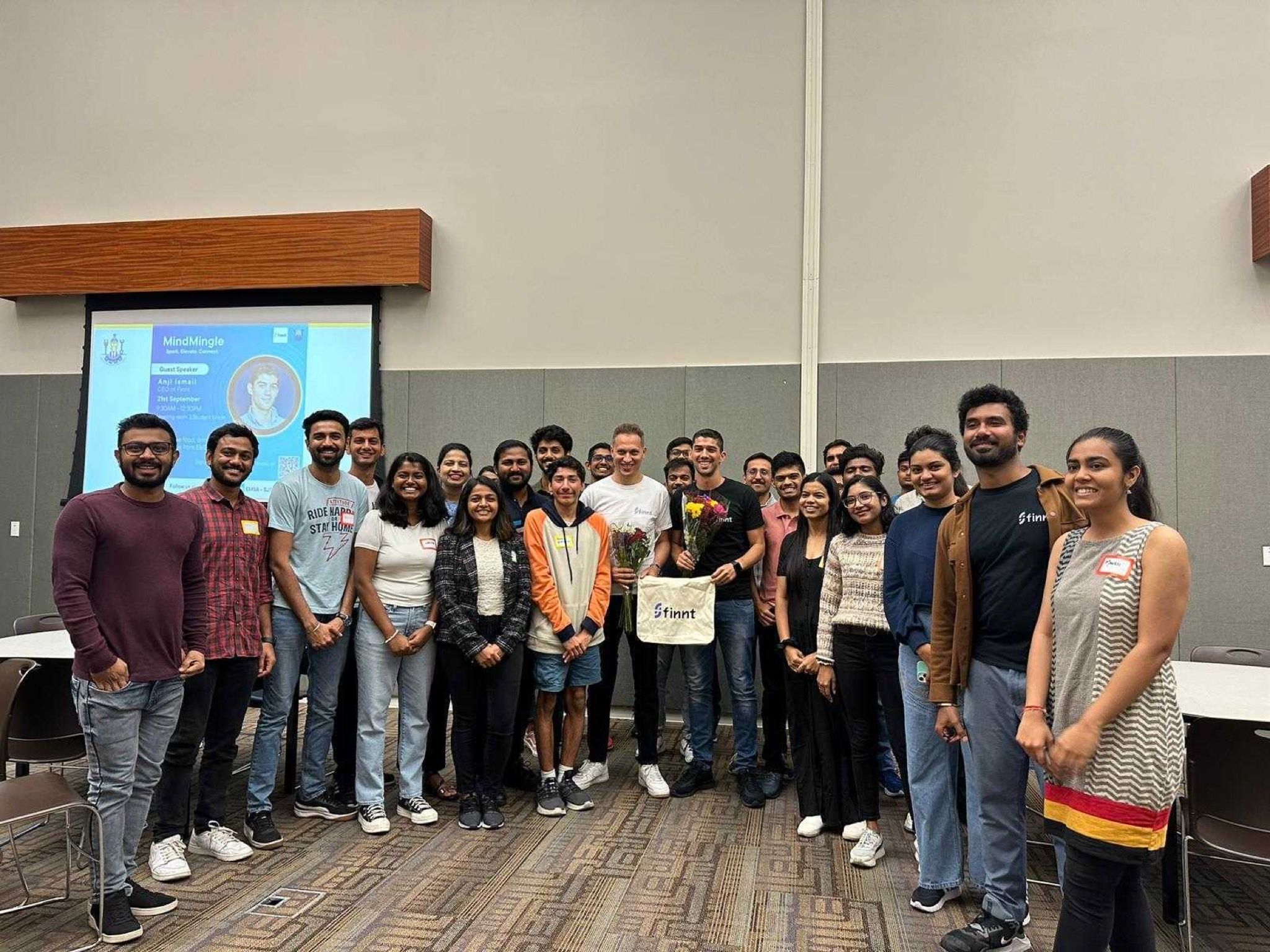
DATE
Oct 2022 - Dec 2023
USERS
College students
SOFTWARE
Figma
Principle
Jira
Slack
Maze
SKILLS
UX/UI
User Experience
User Research
User Interface
Context
Finnt is a banking application designed to help American students better manage and transfer their money, particularly in the context of student associations and shared accommodation.
Challenges & My Role as Founding Designer
As founding product designer, my role was not limited to UX/UI, but covered product and strategic aspects:
My design role :
- Conduct UX research, interviews, and user testing to understand user needs.
- Create and structure a Design System (UI Kit) to ensure consistency and efficiency.
- Optimize collaboration between design, tech, and product teams.
- Evangelize design culture within the team and to investors.
My role in product & strategy :
- Define the product vision and align design with business goals.
- Achieve Product-Market Fit through rapid iteration and user feedback.
- Implement a Go-To-Market strategy.
- Working in Lean & Agile method to test and refine features quickly.
- Anticipate strategic and business challenges related to product decisions.
Methodology & Project Scoping
At Finnt, we adopted an Agile/Scrum methodology to ensure flexibility and responsiveness to user feedback and market shifts. This approach allowed us to:
- Sprint planning: Organize work in short cycles to deliver incremental features.
- Daily stand-ups: Facilitate communication and collaboration within the team.
- Retrospectives: Identify areas for improvement and adjust processes accordingly.
1 - Understanding Users
Rather than relying on a rigid framework, we took a hands-on approach:
- User interviews → Identifying real frustrations.
- Observing alternative solutions → Understanding why users relied on Venmo, Cash App...
- Detecting recurring patterns → Recognizing pain points that surfaced repeatedly.
To establish a solid user base, we aimed to integrate them from the very beginning of the project and new features, ensuring they were deeply involved throughout the process. To create a solid foundation, we engaged users from the start, incorporating their feedback into early product and feature development.
Key Insights & Findings
- Lack of suitable financial tools for group management (roommates, student clubs).
- Frustration with payment tracking and transparency.
- Demand for an ultra-simple UX.
These insights allowed us to prioritize essential features for our MVP.

2 - Design & Prototyping
After identifying user needs, we quickly moved to creating, prototyping, and testing our ideas to:
- Collect user feedback as quickly as possible.
- Refine our solutions based on real insights.
- Ensure we were solving the right problems.
Phase 1: Mapping Product Needs
- Defining key functionalities (user accounts, transactions, group management).
Phase 2: Iterative Project Development
- Week 1: Validate the core structure using wireframes and prototypes.
- Week 2: Technical feasibility check with developers → Adjustments based on constraints.
- Week 3: User testing on the first prototype.
One of the lessons learned during this phase was :
The product vision evolves quickly and must remain flexible.

Setting Up a Design System (UI Kit)
To ensure fast delivery and visual consistency, we established a UI Kit:
- Guaranteeing design coherence and avoiding redundant decisions.
- Enabling rapid iterations.
- Facilitating asynchronous collaboration.
This allowed us to focus on product-related decisions rather than endless visual discussions.

3 - Achieving Product-Market Fit and Iterating Quickly
How did we know we had our product-market fit?
We followed key signals:
- User reactions to changes
- Engagement and retention → Number of active users, frequency of use.
- Engaged and active users on the evolution of the product.
To mesure this we used Mixe panel.

Our Go to market strategy?
We had implemented several systems to enable user acquisition:
- An internal feature of the app: the referral program (the more people you invite, the more money you earn).
- Being active on university campuses (designing app ambassadors to promote Finnt within universities).
- Gamifying the app (the more people you invite, the more rewards you can earn).
- Partnerships with student organizations (Stanford university)."

4 - The decision to pivot
After more than a year of work, it’s hard to want to pivot and 'throw everything away.' But that’s also part of being a designer—recognizing mistakes and not being afraid to start from a blank page to move forward better.
Why did we interrupt Finnt?
We had implemented several systems to enable user acquisition:
A major problem has emerged: the increase in fraudulent activity.
- Late detection: we underestimated the risks at the design stage.
- Impact: Legal threat and loss of confidence among legitimate users.
My learning
As a founding designer for a company, I learned a lot, both about design and the strategic decisions that had to be made:
- Don’t limit yourself to design, but be involved in product strategy.
- Product-Market Fit isn’t necessarily found through a framework, but through user proximity (including them throughout the process).
- The importance of structuring a Design System from the start, but keeping it lightweight.
- Document every decision to ensure good asynchronous communication.
- Try to anticipate business risks as much as possible from the design phase.
Test and download the app

FINNT (YC W22)
Student Banking App Built for students and their people.